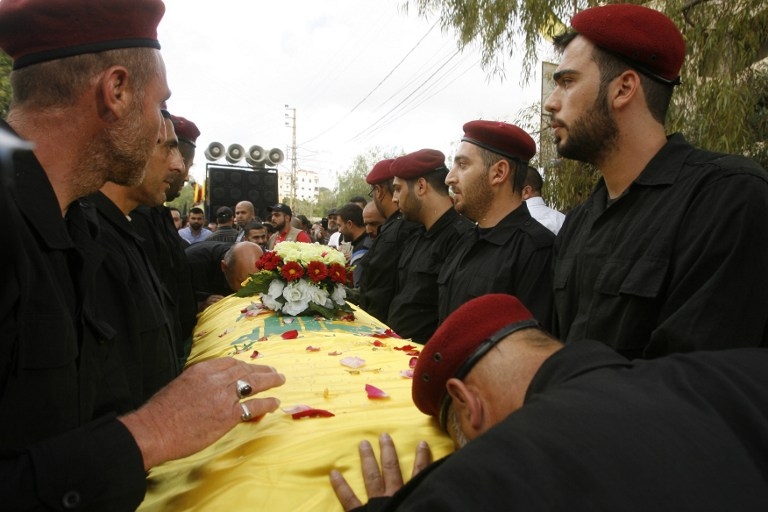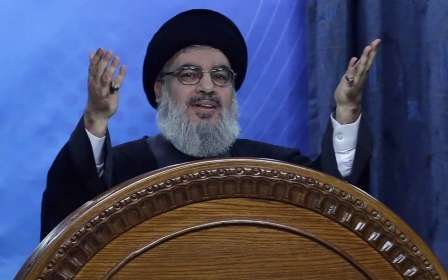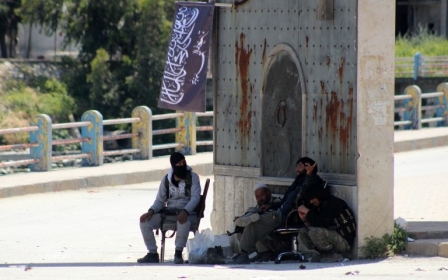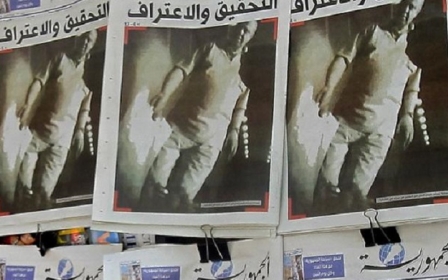Hezbollah carries the burden of the war along Syrian border

TYRE, Lebanon - The cemetery in the southern Lebanese coastal town of Tyre, also known as Sour, is a grey monotonous place surrounded by the Mediterranean Sea. The only contrast comes from a yellow flag with a green emblem, stretched taut by two sticks. It is a new, pristine Hezbollah flag that surrounds the tomb of a teenage militant who died two months ago fighting in Syria.
The tomb of Hisham Ahmad, who was 18 years old, is not unusual in the cemeteries in cities and towns where Hezbollah draws its support. Since the leadership officially announced that it had begun military operations to help Syrian President Bashar al-Assad in 2013, many of its fighters have been killed.
The party has been very secretive about the number of deaths among its ranks, but constant images of burials and the virulence of the conflict in Syria has led many local journalists and analysts to conclude that Hezbollah is paying a heavy toll. Some believe that the casualty figures are the highest Hezbollah has ever suffered. It is definitely higher than the death toll during the war between Hezbollah and Israel in 2006, when around 250 fighters were killed during the 33-days war.
In Sour, where support for Hezbollah is strong, the toll has been particularly high and many new tombs at the graveyard are adorned with pictures of young fighters holding the yellow flag and wielding automatic weapons.
Recruiting drive
However, with the war next door now going badly for Assad, Hezbollah has found itself in need of more troops, and local media reports have been increasingly suggesting that a fresh recruiting drive is currently underway in Lebanon.
The party offers a salary of between $500 and $2,000 dollars a month to its young followers, some of whom are as young as 15. Few Hezbollah supporters at least openly challenge the party’s rationale behind the war.
“Hezbollah needs to fight in Syria to prevent the spillover of the conflict in Lebanon,” said Mohammad, who owns a grocery store in the centre of Sour and proudly hangs a calendar with the photo of Hassan Nasrallah, secretary general of the party, on his walls.
Mohammad believes that Hezbollah’s presence in Syria is necessary in order to avoid turning Lebanon “into a new Syria or Iraq”. Other Sour residents also stress that they are scared of groups like the Islamic State or al-Nusra – al-Qaeda's branch in Syria. Both groups control of large parts of Syria and have repeatedly threatened the Shiite community in the region.
Rising casualty toll
But the long duration of the conflict and the casualty toll among the Hezbollah ranks is a heavy burden for its supporters. “We should ensure the border with Syria is free from opposition groups, but we shouldn't go any further inside the country,” Mohammad continued, while lowering his voice.
He is referring to the clashes in the Qalamoun area, a mountainous strip along the Lebanese-Syrian border (a third of which is in Lebanon), where Syrian opposition fighters like Nusra have sought refuge for the past two years as Hezbollah and the Syrian army continued to cement their control over western Syria.
After a string of defeats for Assad elsewhere, it now seems that Hezbollah is looking to dislodge those fighters that have settled in its backyard: the Qalamoun area overlooks the Bekaa valley, home of thousands of Lebanese Shiites and many party supporters.
“The Resistance - a name used by Hezbollah supporters - has proven effective in stopping the menaces in the border, despite paying a heavy price,” said a journalist with close ties to the party who wished to remain anonymous. “It is not clear that the army can deal with this danger alone, or at least without destabilising more the fragile balance in the country.”
The last televised address of Nasrallah on 5 May, focused on the situation along the border. A day before, opposition groups led by Nusra - the militia with the highest number of fighters in the area - announced the formation of the “Army of Conquest,” a coalition of different groups who launched that same day a preventative attack on Hezbollah fighters.
Although it is not clear how many opposition fighters are in the border territory, military Lebanese sources are talking about a few thousand. “I'll say that from the reports we've got, there are between 3,000 and 4,000 militants stuck in the Qalamoun area,” said Hisham Jaber, a retired general of the Lebanese Armed Forces (LAF).
Since the televised speech, the coalition of the Syrian army and Hezbollah has retaken many strategic hilltops in the area. The most important so far is Tall Moussa, the highest point that rises nearly 2,500 metres above sea level. After two years watching insurgents moving freely around this mountainous chain, Jaber believes that letting militants hang around any longer could prove “catastrophic” for both Assad and Hezbollah.
“After strategic defeats in the north and the advance of opposition groups in the south, losing Qalamoun could cause the loss of the area the regime has prioritised since the beginning of the war,” said Jaber, “and isolate Hezbollah inside Lebanon with no external land connection.”
Defending Assad stronghold
The government of Bashar al-Assad has always focused on maintaining control of the coastal area and Damascus, and consequently the route that links those areas. Opposition groups have come dangerously close to Latakia, a Mediterranean region, from the north and are not so far from the government stronghold. The latest success could encourage the insurgents, say analysts, to send reinforcements from Qalamoun from where they can attack both the route that links the coast to the capital as well as the highway that connects Beirut and Damascus, vital for Hezbollah.
“Both Hezbollah and the Syrian army desperately need a victory after suffering important defeats in other parts of the country, all with heavy tolls,” said Mario Abou Zeid, a researcher at the Carnegie Middle East Institute. “It has also a vital value because the presence of opposition fighters can endanger supply lines between Beirut and Damascus and link opposition groups to other border areas in the south, like the Golan valley.”
For Hezbollah, Abou Zeid explains, it could prove fatal to be cornered inside Lebanon with no connection to Syria if there is an internal conflict or another war against Israel.
But while securing the area might be a matter of life and death for Hezbollah, the mission is unlikely to be an easy one and Hezbollah risks bleeding more lives and resources even in areas closer to home.
Mountain hold-out
An analyst who focuses on Syrian conflict and Hezbollah strategies, Abou Zeid believes that it will be extremely difficult for one of the two sides to clear the area. “Mountains over there are very high - between 2,000 and 3,000 metres - and opposition fighters have survived two cold consecutive winters.” These groups have had time to build “caves and tunnels” to be protected from attacks, he added.
Some reports are also pointing out that fighters could retreat to the area between the Lebanese town of Arsal and the border, a no-man's land where the Lebanese army is absent.
The last Lebanese soldiers stand a few kilometres from Arsal on the curvy road that links the town to the main artery that crosses the Bekaa Valley in eastern Lebanon. The town is home to 40,000 inhabitants but has also seen an influx of Syrian refugees that have nearly tripled its population in the last two years.
Arsal was the scene last August of deadly clashes between Lebanese security agencies and IS and al-Nusra. Militants from those groups had profited from the vacuum of power in the area to establish a permanent base. More than a hundred perished in the five days of clashes, nearly half of them civilians. Militant groups captured dozens of soldiers and policemen, twenty-five of whom are still in captivity.
This situation is another element of instability in Lebanon, a little country that is suffering from the spillover of the conflict in Syria. Refugees make now a quarter of the total population; the regional turmoil has affected key sectors, such as tourism, in an already stagnating economy; the Lebanese army stepped up, in part thanks to an increase on external funding, think tackle risks. This year has so far not seen any blasts nor major internal clashes. But the decision of Hezbollah to intervene in Syria has deepened the political and social rift in an already polarized country.
Historically used to live on the edge, the main desire of most Lebanese is just to avoid a violence that could drag the country in another war.
"People are mainly concerned about security. But all this instability has consequently paralyzed even more our rotten public institutions," added the journalist with close Hezbollah ties.
New MEE newsletter: Jerusalem Dispatch
Sign up to get the latest insights and analysis on Israel-Palestine, alongside Turkey Unpacked and other MEE newsletters
Middle East Eye delivers independent and unrivalled coverage and analysis of the Middle East, North Africa and beyond. To learn more about republishing this content and the associated fees, please fill out this form. More about MEE can be found here.




